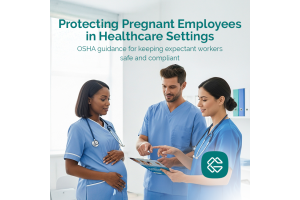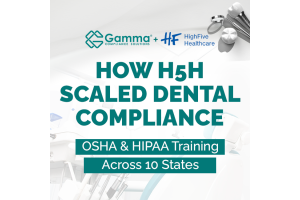Page 3 - Resource Library
- February 24, 2025OSHA Guides
Does your business operate in California? Familiarize yourself with Cal OSHA, explore key regulations, and find valuable resources to ensure workplace safety.
- January 21, 2025OSHA Guides
Do you need special Department of Transportation (DOT) training for employees signing the regulated medical waste (RMW) manifest? Find out in this article.
- November 22, 2024OSHA Guides
Are handwashing sinks required at injection preparation sites? Find out in this article.
- October 01, 2024OSHA Guides
This table provides a comprehensive overview of safety committee requirements for each state in the U.S. It outlines whether a safety committee is mandated, the relevant citations for legal reference, and important details about committee membership and meeting frequency.
- August 28, 2024OSHA Guides
As a medical facility, adhering to Occupational Safety and Health Administration's (OSHA) regulations is a legal obligation and a moral one for your business. Lack of compliance with OSHA standards can result in unsafe working conditions, leading to accidents, legal issues, and a tarnished business reputation. This is why it’s crucial for every medical facility to understand and assess their OSHA requirements.
- August 28, 2024OSHA Guides
Ensuring compliance with the Occupational Safety and Health Administration (OSHA) regulations is crucial for dental offices to provide a safe workplace for their employees and patients. These regulations necessitate a thorough and ongoing adherence strategy.
- August 28, 2024OSHA Guides
When it comes to running a business, nothing is more important than the safety of your staff and workplace. Understanding and mitigating workplace hazards is not merely a regulatory requirement; it's a fundamental responsibility that organizations have toward their employees.
- August 28, 2024OSHA Guides
Infection control is a critical component of maintaining a safe and effective veterinary practice. Protecting patients and staff from communicable diseases ensures the health and longevity of any practice and compliance with industry regulations.
- August 28, 2024OSHA Guides
At Gamma Compliance Solutions, we prioritize the prevention of healthcare workplace violence through comprehensive compliance training programs. Our training modules feature courses to educate healthcare professionals on potential threats and equip them with the necessary skills to effectively mitigate and manage violent situations.
- August 28, 2024HIPAA Guides
Effective medical recordkeeping is crucial for ensuring high-quality patient care and maintaining regulatory compliance. Gamma Compliance Solutions offers comprehensive training to help organizations adhere to best practices and proper medical recordkeeping standards.





